BARCELONA
DISCOVER GAUDI'S LEGACY
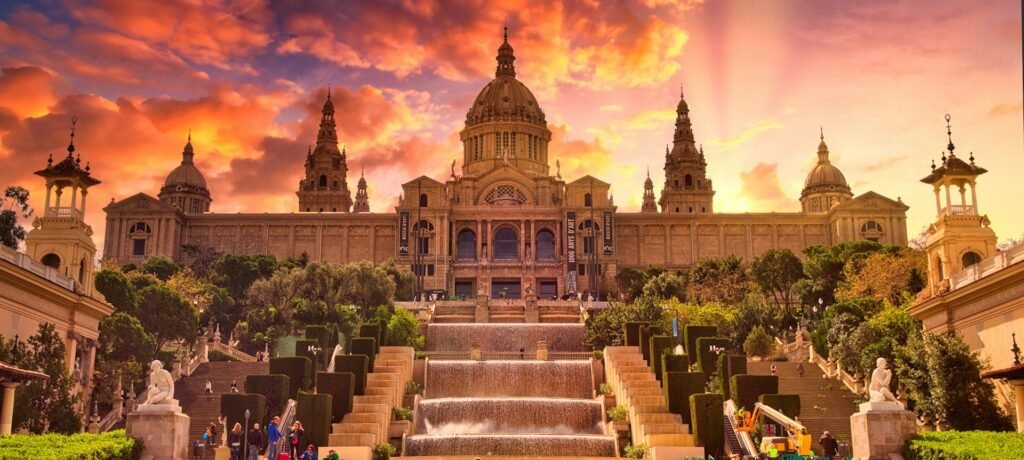
Barcelona, perched on Spain’s northeastern coast, buzzes with Mediterranean charm and bold creativity. From the lively La Rambla to the ancient Gothic Quarter, its streets blend history with vibrant energy. Antoni Gaudí’s genius sets it apart—his iconic Sagrada Família, still rising after a century, transforms the skyline with its organic, otherworldly design. Add beaches, nightlife, and tapas, and Barcelona feels both timeless and electric. Gaudí’s mark is everywhere, infusing the city with surreal beauty.
It helps keep this site running, and we appreciate your support!
Sightseeing

Sagrada Família
Antoni Gaudí’s Sagrada Família, begun in 1882, remains unfinished yet awe-inspiring. Its spires rise like organic forms, fusing Gothic and Art Nouveau in a playful swirl. Inside, stained glass casts vibrant hues, and columns evoke a forest. A UNESCO site, it lures millions despite ongoing work—aiming for completion by 2026, Gaudí’s centenary. It’s a bold tribute to creativity and endurance.

Parc Güell
Overlooking Barcelona, Parc Güell is Antoni Gaudí’s whimsical gift to the city, a public park since 1926 after a failed upscale housing dream. Its vibrant mosaics—think shimmering lizards and wavy benches—blend with curvy stone arches, all framed by Mediterranean views. Started in 1900, this UNESCO site feels like a surreal garden, mixing nature and art in a playful sprawl. Entry to the monumental zone runs $12 USD, but free areas still dazzle. It’s a hillside escape where Gaudí’s imagination runs wild—perfect for a sunny wander.
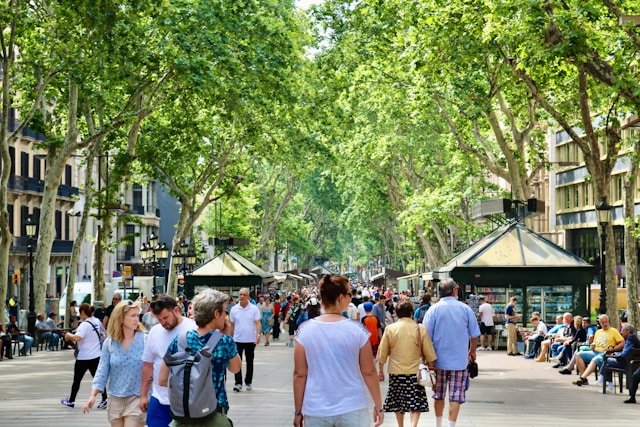
La Rambla
Stretching through Barcelona’s heart, La Rambla buzzes with life—a 1.2-kilometer promenade from Plaça de Catalunya to the waterfront. Lined with flower stalls, street performers, and cafés, it’s a sensory overload blending tourist traps with local flair. Begun in the 18th century, it’s chaotic yet charming. Watch your wallet amid the crowds, and duck into side streets for quieter tapas spots—it’s the city’s pulsing artery.
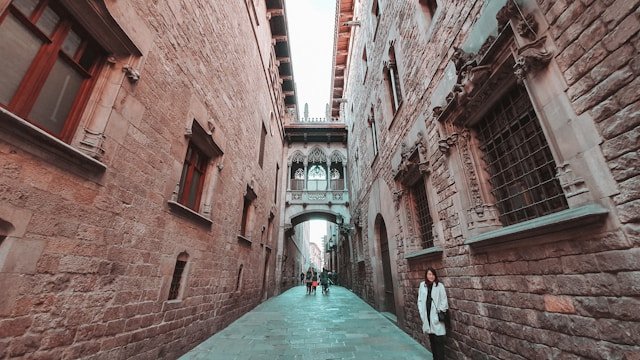
Gothic Quarter (Barri Gòtic)
Steeped in history, the Gothic Quarter weaves a medieval maze of narrow streets in Barcelona’s old core. Roman walls meet Gothic spires like the Cathedral of Barcelona, built from the 13th century. Cobbled lanes hide tapas bars and boutiques, oozing charm over centuries. It’s free to roam, though guided tours ($20 USD) dig deeper. It’s a time capsule best savored on foot.
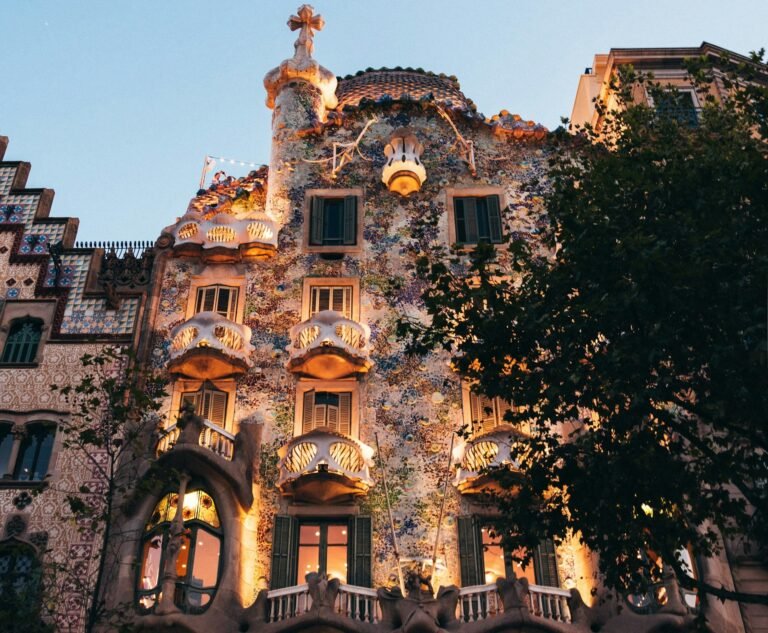
Casa Batlló
On Passeig de Gràcia, Casa Batlló emerges as Gaudí’s fantastical rework of a 1904 townhouse, its facade a fluid dream of skull-like balconies and iridescent tiles. A UNESCO treasure, it channels a dragon’s spine with its rooftop, while inside, stained glass and organic curves mimic an underwater world. Entry’s pricey at $35 USD, but it unveils Gaudí’s genius—every detail, from doorknobs to skylights, bends reality. Locals call it “Casa dels Ossos” (House of Bones), and it’s a vivid, living sculpture in Barcelona’s posh heart.
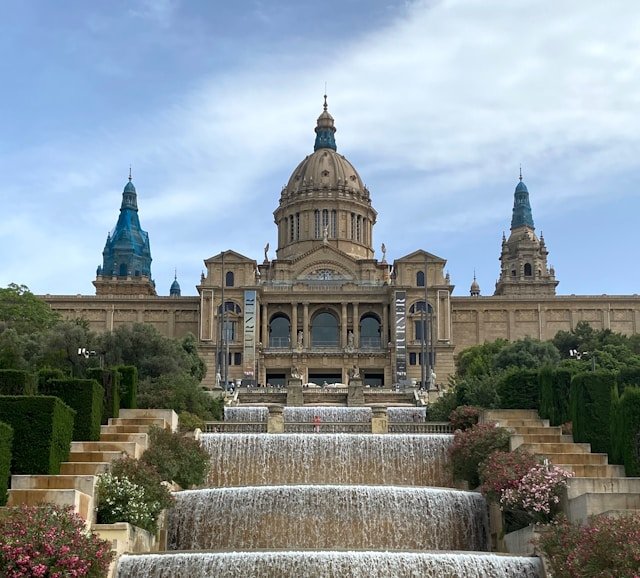
Montjuïc Hill
Looming over Barcelona’s southwest, Montjuïc Hill blends history and horizon with its 17th-century castle, a former fortress with a dark past of executions. Revamped for the 1992 Olympics, it now boasts the stadium, lush gardens, and museums like the Joan Miró Foundation. Cable cars ($15 USD round-trip) glide you up for postcard views of the city and sea, while free paths invite exploration. It’s a cultural mishmash—forts, art, and greenery—offering a breezy break from the urban buzz below.

La Boqueria Market
Tucked off La Rambla, La Boqueria Market bursts with color—fresh seafood, jamón, and fruit stalls since the 13th century. A foodie haven, it’s loud, fragrant, and packed with locals and tourists bartering for treats. Bites like croquetas cost $2–$5 USD, making it a cheap feast. It’s Barcelona’s tastiest chaos—dive in early to beat the rush.

Camp Nou
Soccer’s cathedral, Camp Nou roars as FC Barcelona’s home since 1957, seating nearly 100,000 fans. This massive stadium oozes history—tours ($35 USD) reveal trophies, tunnels, and the pitch. Match days electrify, though tickets can hit $50+ USD. Even non-fans feel its pulse—it’s a pilgrimage for sports lovers in Catalonia’s capital.
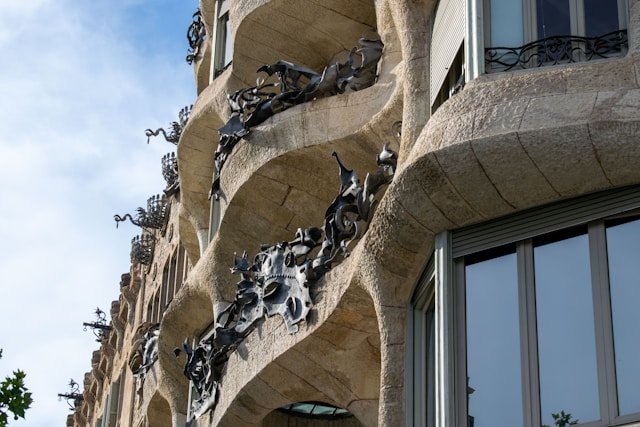
Passeig de Gràcia
Passeig de Gràcia slices through Barcelona as a chic boulevard of high-end shops and Gaudí gems like Casa Batlló. Born in the 19th century as an Eixample showcase, its tiled sidewalks and iron lampposts charm strollers. Free to walk, it’s window-shopping heaven—though boutiques and cafés tempt your wallet. It’s the city’s elegant spine.
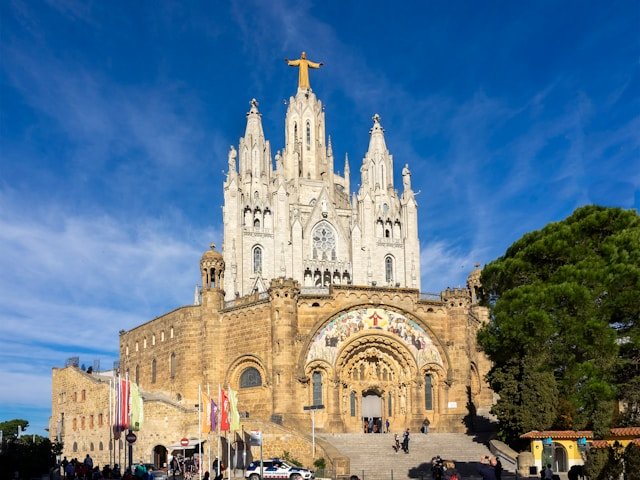
Tibidabo
High above Barcelona, Tibidabo marries nostalgia with stunning vistas, crowned by the Sagrat Cor church and a century-old amusement park. Since 1901, its retro rides—like a creaky Ferris wheel—have thrilled visitors, while the church’s Christ statue gazes over the city. Reachable by a scenic funicular, entry’s $42 USD for the park, though the peak’s free to roam. It’s a quirky blend of faith and fun, steeped in early 20th-century charm—a lofty retreat for families or anyone craving a sky-high adventure.
Activities
Flights
Hotels
Hotel Jazz
Just a short stroll from Plaça Catalunya, this stylish yet affordable hotel offers international tourists a winning mix of location and comfort. Its rooftop pool and terrace provide a relaxing spot to unwind with panoramic city views after exploring Barcelona’s lively streets. Modern rooms feature free Wi-Fi and flat-screen TVs, and the complimentary breakfast buffet is a great start to a day of sightseeing. Positioned near the Universitat Metro Station, it’s easy to hop to La Rambla or the Gothic Quarter. Guests love the friendly staff, spotless facilities, and the occasional live music that adds a special touch to the stay.
Barcelona Basics: Food, Tickets, and Local Vibes
Explore Beyond the Center: Find the Real Barcelona
